THEY ARE JUST LIKE LIVE SPARKS IN A BLAZING FIRE
They are just like live sparks in a blazing fire
“The example is given, just like fire and spark of the fire. The fire and the spark, the spark is very small, but it is fire. And the big fire, together they look very beautiful. With the fire, when the sparks come-sput sput—so many sparks, it looks very beautiful. But the sparks sometimes fall down from the original fire. Then it is no more fire. It is fire, but it’s extinguished. The illumination is over.”
“The sparks of the fire, although one in quality with the fire, are prone to be extinguished when falling out of the fire.”
Just like a fire. There are sparks. The sometimes the sparks fall down from the fire. Now there are three conditions of the fire spark falling down. If the spark falls down on dry grass, then it can immediately ignite the grass, the dry grass. If the spark falls down on ordinary grass, then it burns for some time, then again it becomes extinguished. But if the spark falls down on the water, immediately extinguished, the fiery quality. So those who are captured by the sattva-guṇa (goodness), they are intelligent. They have got knowledge. Just like brāhmaṇa. And those who are captured by the rajo-guṇa (passion), they are busy in material activities. And those who have captured tamo-guṇa (ignoranze), they are lazy and sleepy. That’s all. These are the symptoms. Tamo-guṇa means they’re very lazy and sleepy. Rajo-guṇa means very active, but active like monkey. Just like monkey’s very active, but they’re all dangerous. You’ll never see inactive. Whenever it will sit down, it will make gat gat gat gat. (Lecture BG 2.7 August 7, 1973)
LIVE SPARKS OF A BLAZING FIRE
32 / PRAYERS BY THE PERSONIFIED VEDAS
Compiled by Mohini Devi
The Vedas personified continued. “Our dear Lord,” they prayed, “You are equal to all, with no partiality toward a particular type of living entity. As Your parts and parcels, all living entities enjoy or suffer in different conditions of life. They are just like the sparks of a fire. Just as sparks dance on a blazing fire, so all living entities are dancing on Your support. You are providing them with everything they desire, and yet You are not responsible for their position of enjoyment or suffering. There are different types of living entities–demigods, human beings, animals, trees, birds, beasts, germs, worms, insects and aquatics–and all are enjoying or suffering in life by resting on You. The living entities are of two kinds: one class is called ever-liberated, nitya-mukta, and the other class is called nitya-baddha. The nitya-mukta living entities are in the spiritual kingdom, and the nitya-baddha are in the material world.
Note: This is a very lengthy and very interesting chapter. Among other subjects the personified Vedas, in great detail, explain by various examples the conditions of the living entities and their relationship to the Supreme Lord. They compare the living entities to sparks in a fire, to different types of vegetation, to birds flying at different altitudes in the sky and different sized bubbles in water.
LIKE LIVE SPARKS OF A BLAZING FIRE
“In the spiritual world both the Lord and the living entities are manifest in their original status, like live sparks in a blazing fire. But in the material world, although the Lord is all-pervasive in His impersonal feature, the living entities have forgotten their Kṛṣṇa consciousness, just as sparks sometimes fall from a blazing fire and lose their original brilliant condition. Some sparks fall onto dry grass and thus ignite another big fire. This is a reference to the pure devotees who take compassion on the poor and innocent living entities. The pure devotee enlightens Kṛṣṇaconsciousness in the hearts of the conditioned souls, and thus the blazing fire of the spiritual world becomes manifest even within this material world. Some sparks fall onto water; they immediately lose their original brilliance and become almost extinct. This is comparable to the living entities who take their birth in the midst of gross materialists, in which case their original Kṛṣṇa consciousness becomes almost extinct. Some sparks fall to the ground and remain midway between the blazing and extinct conditions. Thus some living entities are without Kṛṣṇa consciousness, some are between having and not having Kṛṣṇa consciousness, and some are actually situated in Kṛṣṇa consciousness. The demigods in the higher planets, beginning form Lord Brahmā, Indra, Candra, the sun-god, the moon-god, and various other demigods, are all Kṛṣṇa conscious. Human society is between the demigods and the animals, and thus some are more or less Kṛṣṇa conscious, and some are completely forgetful of Kṛṣṇa consciousness. The third-grade living entities, namely the animals, beasts, plants, trees and aquatics, have completely forgotten Kṛṣṇa consciousness. This example stated in the Vedas of the the sparks of a blazing fire is very appropriate for understanding the condition of different types of living entities. But above all other living entities is the Supreme Personality of Godhead, Kṛṣṇa or Puruṣottama, who is always liberated from all material conditions.
THERE CANNOT BE ANY INFLUENCE OF CHANCE FOR THE LIVING ENTITIES
“The question may be raised as to why the living entities have fallen by chance into different conditions of life. To answer this question, we first have to understand that there cannot be any influence of chance for the living entities; chance is for nonliving entities. According to the Vedic literatures, living entities have knowledge, and thus they are called caitanya, which means in knowledge. Their situation in different conditions of life, therefore, is not accidental. It is by their choice because they have knowledge. In the Bhagavad-gītā the Lord says, ‘Give up everything and just surrender unto Me.’ This process of realizing the Supreme Personality of Godhead is open for everyone, but still it is the choice of the particular living entity whether to accept or reject this proposal. In the last portion of the Bhagavad-gītā, Lord Kṛṣṇa very plainly said to Arjuna, ‘My dear Arjuna, now I have spoken everything to you. Everything now depends on whether you choose to accept it.’ Similarly, the living entities who have come down to this material world have made their own choice to enjoy this material world. It is not that Kṛṣṇa sent them into this material world. The material world is created for the enjoyment of living entities who wanted to give up the eternal service of the Lord to become the supreme enjoyer themselves. According to Vaiṣṇava philosophy, when a living entity desires to gratify his senses and forgets the service of the Lord, he is given a place in the material world to act freely according to his desire, and therefore he creates a condition of life in which he either enjoys or suffers. We should know definitely that both the Lord and the living entities are eternally cognizant. There is no birth and death for either the Lord or the living entities. When creation takes place, it does not mean that the living entities are created. The Lord creates this material world to give the conditioned souls a chance to elevate themselves to the higher platform of Kṛṣṇa consciousness. If the conditioned soul does not take advantage of this opportunity, then after the dissolution of this material world, he enters into the body of Nārāyaṇa and remains there in deep sleep until the time of another creation.
“The living entities are atomic individual souls (sanātana) eternally, they are prone to be covered by the illusory energy, and thus they become separated from the association of the Supreme Lord, just as the sparks of the fire, although one in quality with the fire, are prone to be extinguished when out of the fire. In the Varāha Purāṇa, the living entities are described as separated parts and parcels of the Supreme. They are eternally so, according to the Bhagavad-gītā also.” (BG_1972_purports)
SPARKS FALLING OUT OF THE FIRE
Material nature means here our main aim is to find out happiness. That is… Because we are spirit soul, part and parcel of Kṛṣṇa, sac-cid-ānanda-vigraha [Bs. 5.1] Kṛṣṇa, so we are also minute sac-cid-ānanda. Our existence is like that. But because we are very small, therefore that, I mean to say, quality, sat, becomes sometimes extinguished. The example is just like the spark of the fire. It is fire. A spark from the fire falls on your body. As soon as it falls it will burn that small pointlike place. So it has got the same quality. But as soon as it comes out of the fire, it becomes extinguished—no more fire. It is carbon. Again take it and put it in the fire, then again it is fire. So our position is like that. We are factually of the same quality, sac-cid-ānanda.
“The sparks of the fire, although one in quality with the fire,
are prone to be extinguished when falling out of the fire.”
So our falling down in this material world from Kṛṣṇa means we lose our identity of eternity. It becomes covered. Just like the same small spark. It is fire, but it is now extinguished, cinder, just like coal, cinder. So long it is with the original fire, it is also burning, but if you take it and keep it aside, then it becomes ashes. So this is our position. And we are struggling here. We have lost the fiery quality, and still, we are trying to be fire. This is called māyā existence. (prabhupadabooks.com)
Because we are very minute spark of Krishna, as the spark has the chance of being extinguished out of the fire, similarly, being separated from Krishna, being entangled in this material energy, we have forgotten. Our spiritual quality, burning quality, just like fire, that is now extinguished. It is not exactly extinguished; almost extinguished. We have forgotten. But it can be again brought into the original position by fanning. Just like there is small fire in the charcoal. You fan it, and it will gradually become a big fire. So this Krishna consciousness movement is fanning that spiritual spark to come into full consciousness. Go on fanning like that. (Lecture, 22 Dec 1973, Los Angeles)
Just like if the fire sparks fall down out of the blazing fire, it becomes extinguished. So in order to ignite again our fiery quality, we must go back to the original fire. Then the fiery quality, the brilliant fiery quality, will again be exhibited.”
DIFFERENT VEGETABLES SPROUT UP IN DIFFERENT
SHAPES AND FORMS ACCORDING TO The SEEDS PLANTED
“In this connection the example of the rainy season is very appropriate. Seasonal rainfall may be taken as the agent for creation because after the rainfall the wet fields are favorable for growing different types of vegetation. Similarly, as soon as there is creation by the Lord’s glancing over the material nature, immediately the living entities spring up in their different living conditions, just as different types of vegetation grow after a rainfall. The rainfall is one, but the creation of the different vegetables is varied. The rain falls equally on the whole field, but the different vegetables sprout up in different shapes and different forms according to the seeds planted. Similarly, the seeds of our desires are varied. Every living entity has a different type of desire, and that desire is the seed which causes his growth in a certain type of body. This is explained by Rūpa Gosvāmī by the word pāpa-bīja. Pāpa means sinful. All our material desires are to be taken as pāpa-bīja, or the seeds of sinful desires. Bhagavad-gītā explains that our sinful desire is that we do not surrender unto the Supreme Lord. The Lord therefore says in Bhagavad-gītā, ‘I shall give you protection from the resultant actions of sinful desires.’ These sinful desires are manifested in different types of bodies; therefore, no one can accuse the Supreme Lord of partiality in His giving one type of body to a certain type of living entity and another type of body to another living entity. All the bodies of the 8,400,000 species come according to the mental condition of the individual living entities. The Supreme Personality of Godhead, Puruṣottama, only gives them a chance to act according to their desires. Therefore, the living entities are acting, taking advantage of the facility given by the Lord.
In the rainy season the cloud creates different varieties of vegetables.
The cloud pours water on the surface of the earth, but it never touches the earth directly.
Similarly, the Lord creates this material world simply by glancing over the material energy.
“At the same time, they are born from the transcendental body of the Lord. This relationship between the Lord and the living entities is explained in the Vedic literatures, wherein it is said that the Supreme Lord maintains all His children, giving them whatever they want. Similarly, in the Bhagavad-gītā, the Lord says, ‘I am the seed-giving father of all living entities.’ It is very simple to understand that the father gives birth to the children, but the children act according to their own desires. Therefore the father is never responsible for the different futures of his children. Each child can take advantage of the father’s property and instruction, but even though the inheritance and instruction may be the same for all the children, out of their different desires, each child creates a different life and thereby suffers or enjoys.
“Similarly, the Bhagavad-gītā’s instructions are equal for everyone; everyone should surrender unto the Supreme Lord, and He will take charge of them and protect them from sinful reactions. The facilities of living in the creation of the Lord are equally offered to all living entities. Whatever there is, either on the land, on water or in the sky, is equally given to all living entities. Since they are all sons of the Supreme Lord, everyone can enjoy the material facilities given by the Lord, but unfortunate living entities create unfavorable conditions of life by fighting among themselves. The responsibility for this fighting and creating favorable and unfavorable situations of life lies with the living entities, not with the Supreme Personality of Godhead. Therefore, if the living entities take advantage of the Lord’s instructions as given in the Bhagavad-gītā and develop Kṛṣṇa consciousness, then their lives become sublime, and they can go back to Godhead.
THE LORD IS NEVER RESPONSIBLE FOR THE
DIFFERENT CONDITIONS OF THE LIVING ENTITIES
“One may argue that because this material world is created by the Lord, He is therefore responsible for its condition. Certainly He is indirectly responsible for the creation and maintenance of this material world, but He is never responsible for the different conditions of the living entities. The Lord’s creation of this material world is compared to the cloud’s creation of vegetation. In the rainy season the cloud creates different varieties of vegetables. The cloud pours water on the surface of the earth, but it never touches the earth directly. Similarly, the Lord creates this material world simply by glancing over the material energy. This is confirmed in the Vedas: He threw His glance over the material nature, and thus there was creation. In the Bhagavad-gītā it is also confirmed that simply by His transcendental glance over the material nature, He creates different varieties of entities, both movable and immovable, living and dead.
“The creation of the material world can therefore be taken as one of the pastimes of the Lord; it is called one of the pastimes of the Lord because He creates this material world whenever He desires. This desire of the Supreme Personality of Godhead is also extreme mercy on His part because it gives another chance to the conditioned souls to develop their original consciousness and thus go back to Godhead. Therefore no one can blame the Supreme Lord for creating this material world.
ALL LIVING ENTITIES ARE LIKE BIRDS FLYING IN THE UNLIMITED SKY
“similarly, all living entities are like birds flying in the unlimited sky“
In the Caitanya-caritāmṛta, the author, Kṛṣṇadāsa Kavirāja Gosvāmī, after studying all the Vedic literature and hearing from all authorities, has given his opinion that Kṛṣṇa is the only supreme master and that all living entities are His eternal servants. His statement is confirmed in the prayers by the personified Vedas. The conclusion is, therefore, that everyone is under the control of the Supreme Personality of Godhead, everyone is serving under the supreme direction of the Lord, and everyone is afraid of the Supreme Personality of Godhead. It is out of fear of Him that activities are being rightly executed. Everyone’s position is to be subordinate to the Supreme Lord, yet the Lord has no partiality in His view of the living entities. He is just like the unlimited sky; as the sparks of a fire dance in the fire, similarly, all living entities are like birds flying in the unlimited sky. Some of them are flying very high, some are flying at a lesser altitude, and some are flying at a still lesser altitude. The different birds are flying in different positions according to their respective abilities to fly, but the sky has nothing to do with this ability. In the Bhagavad-gītā also, the Lord confirms that He awards different positions to different living entities according to their proportionate surrender. This proportionate reward by the Personality of Godhead to the living entities is not partiality. Therefore, in spite of the living entities’ being situated in different positions, in different spheres, and in different species of life, all of them are always under the control of the Supreme Personality of Godhead, and yet He is never responsible for their different living conditions. It is foolish and artificial, therefore, to think oneself equal to the Supreme Lord, and it is still more foolish to think that one has not seen God. Everyone is seeing God in His different aspects; the only difference is that the theist sees God as the Supreme Personality, the most beloved, Kṛṣṇa, and the atheist sees the Absolute Truth as ultimate death.
THE ORIGINAL SPIRITUAL FORM OF THE LIVING ENTITY IS
ONE TEN-THOUSANDTH THE SIZE OF THE TIP OF THE HAIR
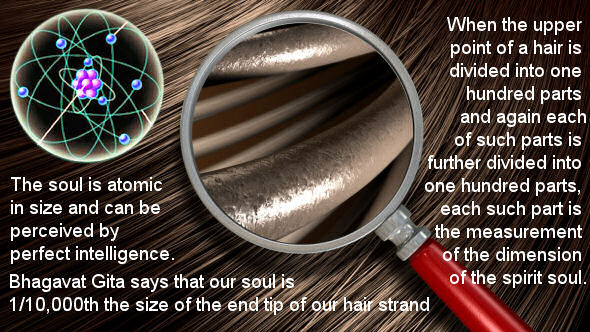
“”If we divide the tip of a hair into a hundred parts and then take one of these parts and divide it again into a hundred parts, that very fine division is the size of but one of the numberless living entities. They are all cit-kaṇa, particles of spirit, not matter.” (CC Madh 19.140)
The personified Vedas therefore concluded, “O Lord, both You and the limited dhruvas, the living entities, are eternal. The form of the unlimited eternal is sometimes calculated as the universal form, and in the Vedic literatures like the Upaniṣads, the form of the limited eternal is vividly described. It is said therein that the original spiritual form of the living entity is one ten-thousandth the size of the tip of a hair. It is stated that the spirit is greater than the greatest and smaller than the smallest. The individual living entities, who are eternally part and parcel of God, are smaller than the smallest. With our material senses, we can perceive neither the Supreme, who is greater than the greatest, nor the individual soul, who is smaller than the smallest. We have to understand both the greatest and the smallest from the authoritative sources of Vedic literature. Vedic literature states that the Supersoul is sitting within the body of a living entity and is as big as a thumb. Therefore the argument may be put forward, how can something the size of a thumb be accommodated within the heart of an ant? The answer is that this thumb measurement of the Supersoul is imagined in proportion to the body of the living entity. In all circumstances, therefore, the Supersoul and the individual living entity cannot be taken as one, although both of them enter within the material body of a living entity. The Supersoul living within the heart is for directing or controlling the individual living entity. Although both are dhruva, or eternal, the living entity is always under the direction of the Supreme.
“It may be argued that because the living entities are born of the material nature, they are all equal and independent. In the Vedic literature, however, it is said that the Supreme Personality of Godhead impregnates the material nature with the living entities, and then they come out. Therefore, the appearance of the individual living entities is not factually due to material nature alone, just as a child produced by a woman is not her independent production. A woman is first impregnated by a man, and then a child is produced. As such, the child produced by the woman is part and parcel of the man. Similarly, the living entities are apparently produced by the material nature, but not independently. It is due to the impregnation of material nature by the supreme father that the living entities are present. Therefore the argument that the individual living entities are not part and parcel of the Supreme cannot stand. For example, the different parts and parcels of the body cannot be taken as equal to the whole; rather, the whole body is the controller of the different limbs. Similarly, the parts and parcels of the supreme whole are always dependent and are always controlled by the source of the parts and parcels. It is confirmed in the Bhagavad-gītā that the living entities are part and parcel of Kṛṣṇa: mamaivāṁśo. No sane man, therefore, will accept the theory that the Supersoul and the individual soul are of the same category. They are equal in quality, but quantitatively the Supersoul is always the Supreme, and the individual soul is always subordinate to the Supersoul. That is the conclusion of the Vedas.”
AS BUBBLES IN THE WATER APPEAR IN DIFFERENT SHAPES
“As water in contact with air sometimes presents innumerable bubbles, so
a combination of material nature and the Supreme Person causes the
appearance of the living entities within this material world.“
The theory of the asuras is that the living entities are born of material nature, or prakṛti, in touch with the puruṣa.This theory also cannot be accepted because both the material nature and the Supreme Personality of Godhead are eternally existing. Neither the material nature nor the Supreme Personality of Godhead can be born. The Supreme Lord is known as aja, or unborn. Similarly, the material nature is also called ajā. Both the terms, aja and ajā, mean unborn. Because both the material nature and the Supreme Lord are unborn, it is not possible that they can beget the living entities. As water in contact with air sometimes presents innumerable bubbles, so a combination of material nature and the Supreme Person causes the appearance of the living entities within this material world. As bubbles in the water appear in different shapes, similarly the living entities also appear in the material world in different shapes and conditions, influenced by the modes of material nature. As such, it is not improper to conclude that the living entities appearing within this material world in different shapes, such as human beings, demigods, animals, birds, beasts, etc., all get their respective bodies due to different desires. No one can say when such desires were awakened in them, and therefore it is said, anādi-karma: the cause of such material existence is untraceable. No one knows when material life began, but it is a fact that it does have a point of beginning because originally every living entity is a spiritual spark.
As sparks falling onto the ground from a fire have a beginning, similarly the living entities coming to this material world have a beginning, but no one can say when. Even during the time of dissolution, these living entities remain merged in the spiritual existence of the Lord, as if in deep sleep, but their original desires to lord it over the material nature do not subside. Again, when there is cosmic manifestation, they come out to fulfill the same desires, and therefore they appear in different species of life.
IN THE HONEYCOMB THE TASTES OF
DIFFERENT FLOWERS AND FRUITS ARE CONSERVED
“The devotees of the Lord are accustomed to licking up the honey
available from the lotus feet of the Lord. What is the use of
mundane topics which simply waste one’s valuable life?”
This merging into the Supreme at the time of dissolution is compared to honey. In the honeycomb, the tastes of different flowers and fruits are conserved. When one drinks honey, one cannot distinguish what sort of honey has been collected from what sort of flower, but the palatable taste of the honey presupposes that the honey is not homogeneous, but is a combination of different tastes. Another example is that although different rivers ultimately mix with the water of the sea, that does not mean that the individual identities of the rivers are thereby lost. Although the water of the Ganges and the Yamunā mixes with the water of the sea, the River Ganges and River Yamunā still continue to exist independently. The merging of different living entities into Brahman at the time of dissolution involves the dissolution of different types of bodies, but the living entities, along with their different tastes, remain individually submerged in Brahman until another manifestation of the material world. As the salty taste of seawater and the sweet taste of Ganges water are different, and this difference continuously exists, so the difference between the Supreme Lord and the living entities continually exists, even though it appears that at the time of dissolution they merge. The conclusion is, therefore, that even when the living entities become free from all contamination of material conditions, they merge into the spiritual kingdom, for still their individual tastes in relationship with the Supreme Lord continue to exist.
The personified Vedas continued: “Our dear Lord, it is our conclusion that all living entities are attracted by Your material energy, and only due to their mistakenly identifying themselves as products of the material nature are they transmigrating from one kind of body to another in forgetfulness of their eternal relationship with You. Because of ignorance, these living entities are misidentifying themselves in different species of life, and especially when they are elevated to the human form of life, they identify with a particular class of men, or a particular nation or race or so-called religion, forgetting their real identity as eternal servants of Your Lordship. Due to this faulty conception of life, they are undergoing repeated birth and death. Out of many millions of them, if one becomes intelligent enough, by association with pure devotees, he comes to the understanding of Kṛṣṇa consciousness and comes out of the jurisdiction of the material misconception.”
In the Caitanya-caritāmṛta it is confirmed by Lord Caitanya that the living entities are wandering within this universe in different species of life, but if one of them becomes intelligent enough, by the mercy of the spiritual master and the Supreme Personality of Godhead, Kṛṣṇa, then he begins his devotional life in Kṛṣṇa consciousness. It is said, hariṁ vīṇā na mṛtim taranti: without the help of the Supreme Personality of Godhead, one cannot get out of the clutches of repeated birth and death. In other words, only the Supreme Lord, the Personality of Godhead, can relieve the conditioned souls from the cycle of repeated birth and death.
The personified Vedas continued: “The influence of time–past, present and future–and the material miseries, such as excessive heat, excessive cold, birth, death, old age, disease, are all simply the movement of Your eyebrows. Everything is working under Your direction. It is said in the Bhagavad-gītā that all material activity is going on under the direction of the Supreme Personality of Godhead, Kṛṣṇa. All the conditions of material existence are opposing elements for persons who are not surrendered unto You. But for those who are surrendered souls and are in full Kṛṣṇaconsciousness, these things cannot be a source of fearfulness. When Lord Nṛsiṁhadeva appeared, Prahlāda Mahārājawas never afraid of Him, whereas his atheist father was immediately faced with death personified and was killed. Therefore, although Lord Nṛsiṁhadeva appears as death for an atheist like Hiraṇyakaśipu, He is always kind and is the reservoir of all pleasure to the devotees like Prahlāda. A pure devotee is not, therefore, afraid of birth, death, old age and disease.
Śrīpāda Śrīdhara Svāmī has composed a nice verse, the purport of which is as follows: “My dear Lord, I am a living entity perpetually disturbed by the conditions of material existence. I have been cracked into different pieces by the smashing wheel of material existence, and because of my various sinful activities while existing in this material world, I am burning in the blazing fire of material reaction. Somehow or other, my dear Lord, I have come to take shelter under Your lotus feet. Please accept me and give me protection.” Śrīla Narottama dāsa Ṭhākur also prays like this: “My dear Lord, O son of Nanda Mahārāja, associated with the daughter of Vṛṣabhānu, I have come to take shelter under Your lotus feet after suffering greatly in the material condition of life, and I pray that You please be merciful upon me. Please do not kick me away; I have no other shelter but You.”
The conclusion is that any process of self-realization or God realization other than bhakti-yoga, or devotional service, is extremely difficult. Taking shelter of devotional service to the Lord in full Kṛṣṇa consciousness is therefore the only way to become free from the contamination of material conditional life, especially in this age. Those who are not in Kṛṣṇa consciousness are simply wasting their time, and they have no tangible proof of spiritual life.
It is said by Lord Rāmacandra, “I always give confidence and security to anyone who surrenders unto Me and decides definitely that He is My eternal servant because that is My natural inclination.” Similarly, Lord Kṛṣṇa says in the Bhagavad-gītā, “The influence of the material nature is insurmountable, but anyone who surrenders unto Me can verily overcome the influence of material nature.” The devotees are not at all interested in arguing with the nondevotees to nullify their theories. Rather than wasting their time, they always engage themselves in the transcendental loving service of the Lord in full Kṛṣṇa consciousness.
Note: This is just one part of the wonderful prayers of the personified Vedas worshipping the Supreme Personality of Godhead in different ways.
This Veda-stuti is thus the original instruction regarding the relationship existing between the living entity their different talents and tendencies.” This Veda-stuti is thus the original instruction regarding the relationship existing between the living entity and the Supreme Personality of Godhead. The highest platform of realization for the living entity is the attainment of this devotional life. One cannot be engaged in devotional life or Kṛṣṇa consciousness unless he is fully free from material contamination. Nārāyaṇa Ṛṣi informed Nārada Muni that the essence of all Vedas and Vedic literatures (namely, the four Vedas, the Upaniṣads, the Purāṇas) teaches the rendering of transcendental loving service to the Lord. In this connection Nārāyaṇa Ṛṣi has used one particular word–rasa. In devotional service this rasa is the via media or the basic principle for exchanging a relationship between the Lord and the living entity. A rasa is also described in the Vedas as īśāvāsya: “The Supreme Lord is the reservoir of all pleasure.” All the Vedic literatures, the Purāṇas, the Vedas, the Upaniṣads, the Vedānta-sutras, etc., are teaching the living entities how to attain the stage of rasa. The Bhāgavatam also says that the statements of the Mahāpurāṇa (Śrīmad-Bhāgavatam) contain the essence rasas in all Vedic literatures. Nigama-kalpa-taror galitaṁ phalaṁ. The Bhāgavatam is the essence of the ripened fruit in the tree of the Vedic literature.
We understand that with the breathing of the Supreme Personality of Godhead there issued forth the four Vedas,namely the Ṛg-veda, the Sāma-veda, Yajur-veda, and the Atharva-veda, and the histories like the Mahābhārata and all the Purāṇas, which are also considered to be the history of the world. The Vedic histories like the Purāṇas and Mahābhārata are called the fifth Veda.
THE VERSES OF VEDA-STUTI ARE TO BE CONSIDERED THE ESSENCE OF ALL VEDIC KNOWLEDGE. THE FOUR KUMARAS AND ALL OTHER AUTHORISED SAGES KNOW PERFECTLY THAT DEVOTIONAL SERVICE IN KRSNA CONSCIOUSNESS IS THE ESSENCE OF ALL VEDIC LITERATURE. https://prabhupadabooks.com/kb/2/32?d=1









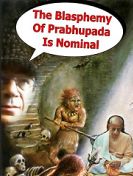
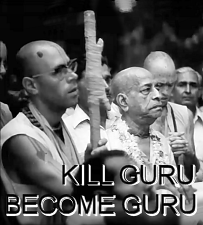
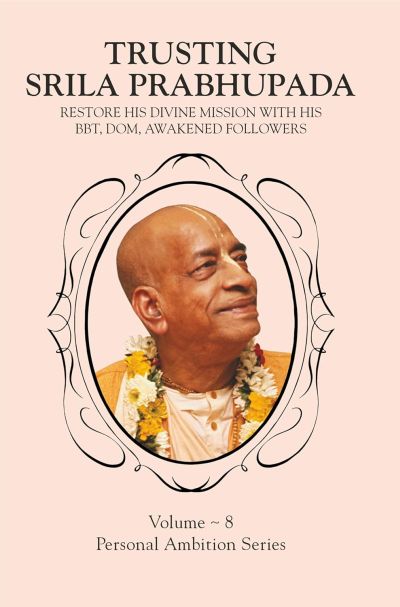
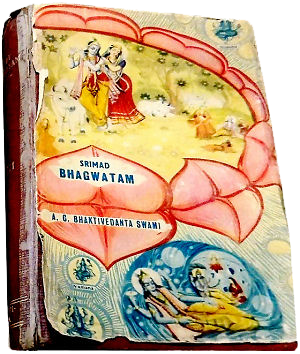
Speak Your Mind